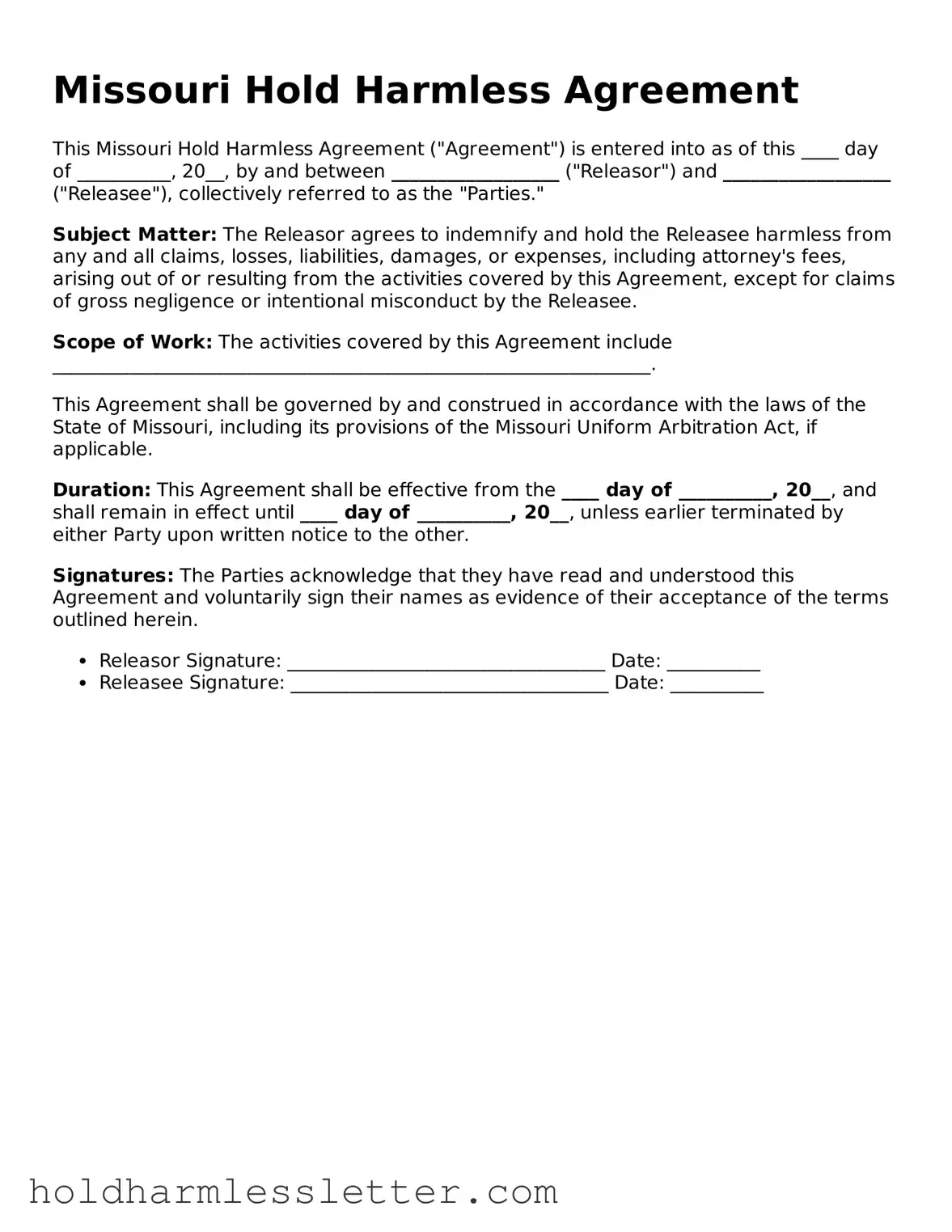What is a Missouri Hold Harmless Agreement?
A Missouri Hold Harmless Agreement is a legal document used to ensure that one party will not be held liable for the risks, liabilities, or potential losses that another party may incur while engaging in a specified activity or transaction. This form of agreement is particularly common in situations involving higher risk, such as construction projects, event hosting, or real estate transactions. It’s a proactive measure to protect individuals and companies from legal entanglements and financial burdens that could arise from unforeseen circumstances.
When should a Hold Harmless Agreement be used in Missouri?
It’s advisable to use a Hold Harmless Agreement in Missouri whenever you’re entering into an arrangement that involves physical risk, property damage, or significant financial stake. Common scenarios include hiring contractors for home improvements, leasing property, organizing events, or any other situation where one party wants to shield itself from liability claims. It serves as a form of risk management, ensuring that the responsibilities and risks are clearly defined and acknowledged by all involved parties.
Is a Missouri Hold Harmless Agreement legally binding?
Yes, a Hold Harmless Agreement in Missouri is legally binding, provided it is structured properly, explicitly details the liabilities and responsibilities each party is assuming or waiving, and is signed by all involved parties. For it to be enforceable, the agreement must also not violate any state laws or public policies. Additionally, clarity and mutual understanding of the agreement's terms are crucial for enforceability in court.
Do I need a lawyer to draft a Hold Harmless Agreement in Missouri?
While it’s possible for individuals to draft a Hold Harmless Agreement on their own, consulting with a lawyer is highly recommended to ensure that all legal requirements are met and the document is tailored correctly to the specific situation. A lawyer can provide valuable insight into the potential risks involved and help draft an agreement that clearly articulates the terms, conditions, and liability waivers, thereby minimizing the chances of future disputes or legal challenges.
What information should be included in a Missouri Hold Harmless Agreement?
A comprehensive Missouri Hold Harmless Agreement should include details such as the names and contact information of all parties involved, the date of the agreement, a description of the activities or transactions covered, the specific risks and liabilities being waived, the duration of the agreement, and any exceptions to the hold harmless clause. Additionally, clear language indicating the mutual understanding and acceptance of the terms by all parties, along with their signatures, is essential for the document's validity.
Can a Hold Harmless Agreement be challenged or voided in Missouri?
Yes, a Hold Harmless Agreement can be challenged or voided in Missouri under certain conditions. If the agreement was signed under duress, contains illegal terms, is overly broad or vague, or if one party was not fully informed or able to understand the implications of the agreement, it may be deemed unenforceable by a court. Furthermore, agreements that indemnify a party against its own negligence are scrutinized closely and, depending on the circumstances, may not be upheld. To mitigate these risks, it’s imperative to ensure that the agreement is fair, clear, and entered into voluntarily by all parties.
